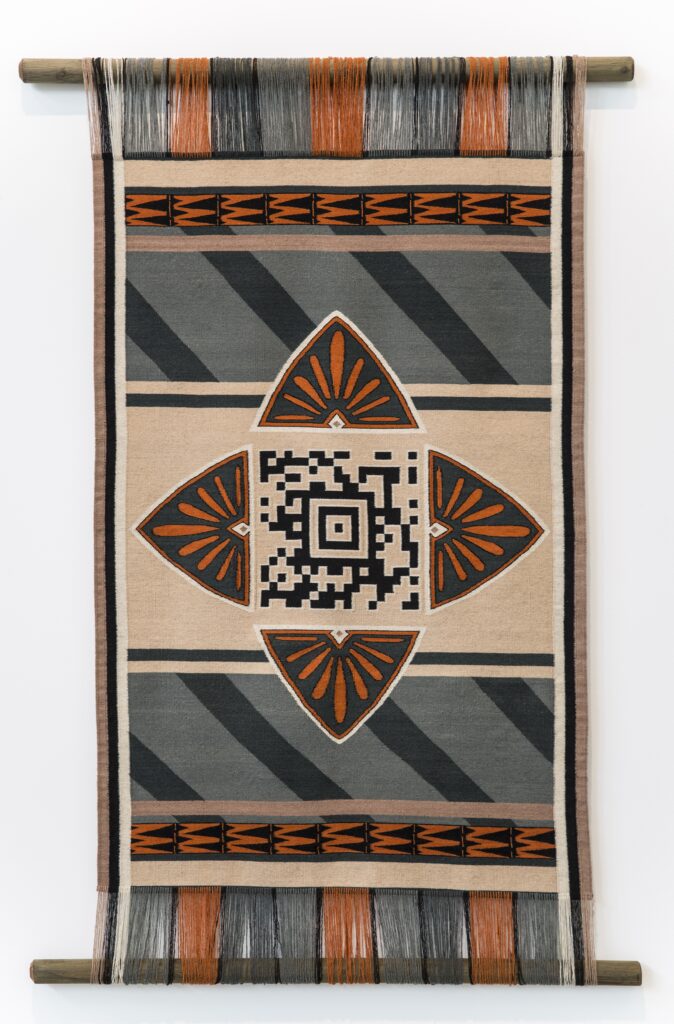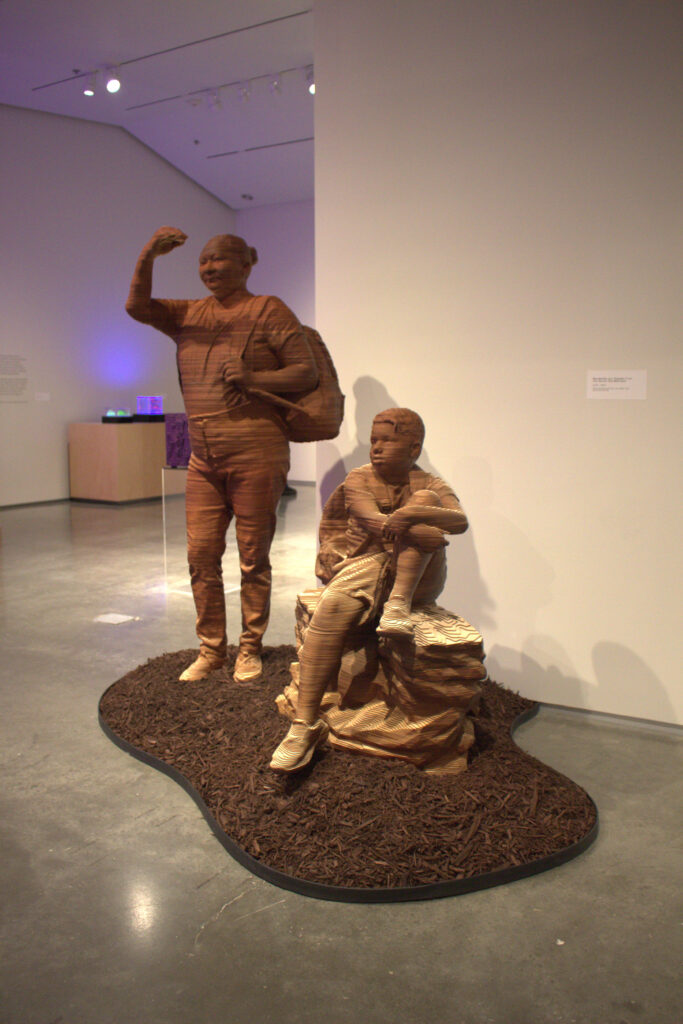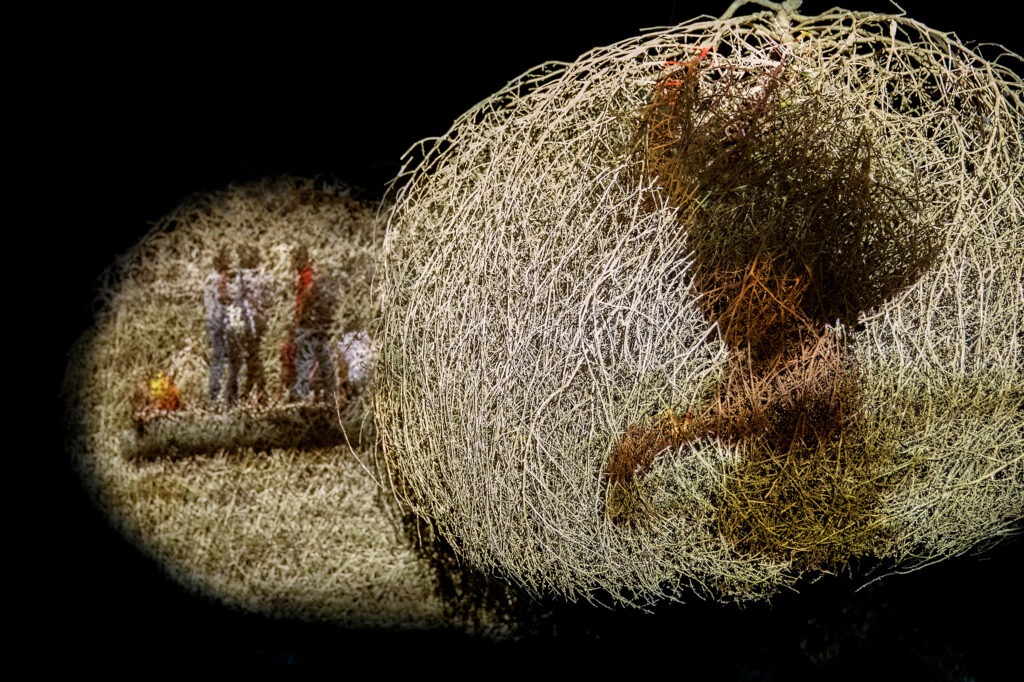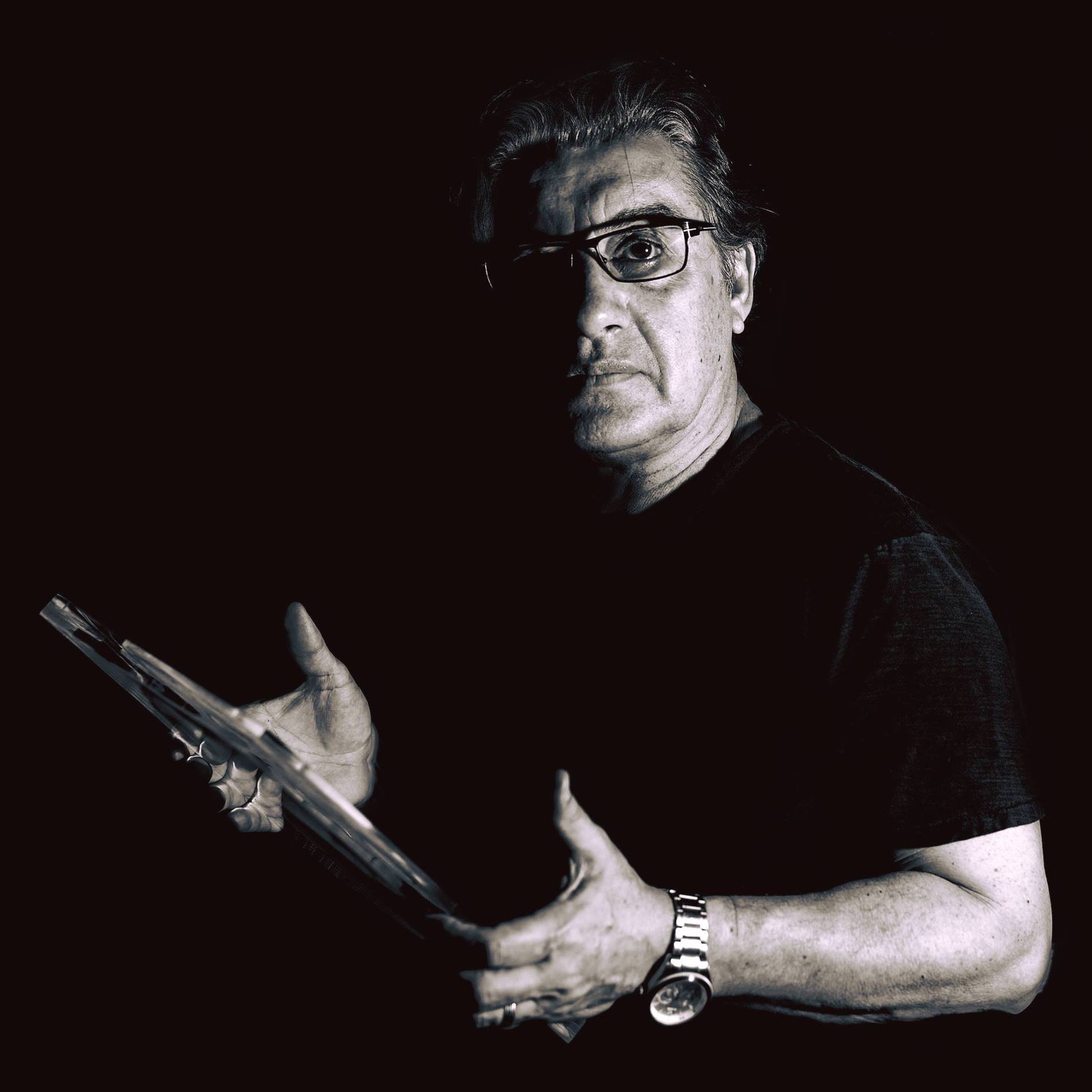The Nevada Museum of Art has held many notable artist collections throughout the years. The four-story building (designed by architect Will Bruder in 2003) houses a variety of mediums and spans decades. Today, its central exhibition (curated by Vivian Zavataro) is Guillermo Bert’s The Journey, a display about immigration, America, and consumerism.
As a person, Guillermo Bert is as charismatic as he is cheeky. He has a firm handshake and a full-body laugh; when I introduced myself, he was easygoing and goodnatured. His humor bleeds into his work, and this was completely clear with a quick glance around the exhibition room
“He plays with the concept of giving value to the values of American society,” exhibition curator Vivian Zavataro says. “Guillermo has a lot of humor in his work, so he always plays with those puns and little snippets of politics. He digs into a lot of those concepts.”
Bert’s exhibition is housed on the third floor of the museum. Walking in, spectators are met immediately with colors and shapes hardly seen before. To the left is his Barcodes series; he’s used automotive paint to give laser-cut boards a capitalistic sheen. The boards are engraved with a single barcode with the word ‘Democracy’ underneath it. All are the same—an exuberance of wealth on full display.
Bert’s work is heavily influenced by his family’s background and upbringing. He was born in Chile, then moved to the U.S. as a child. Living the immigrant experience showed him a darker side of politics—one many American-born artists won’t see. Being exposed to controversial American values (but not necessarily morals) changed Bert for the better.
The next series in the exhibition is Bert’s Encoded Textiles, a collaborative project between him and various Indigenous immigrant groups. Each textile is woven by a different member of a different Indigenous community; he first worked with weavers from the Mapuche community in Chile. Other pieces are woven by artisans from the Southwest, Mexico, and Guatemala. Bert had each participating weaver create a piece and weave a Quick Response (QR) code into the tapestry. Then, each artisan put together a short video or blurb about their people’s history. By preserving this somewhat forgotten art digitally, Bert keeps these stories alive in a novel way.


By giving this historically underrepresented group a voice using technology, Bert spotlights these groups in a way that has simply not been done before. His use of technology also makes the art feel multigenerational. This information is accessible for anyone right in front of the tapestry.
As Bert and Zavataro move through the exhibit, they explain each piece. Zavataro helped Bert put the collection together over a period of two years, consistently keeping him on track (a constant struggle, it seems). Bert had ideas and ideas, but limited museum space.
At the back of the exhibit lies a small movie-theater style room. Visitors walk in and are greeted with about six large… tumbleweeds. Projected over the tumbleweeds, a 2-minute interview with Mexican immigrants plays. They recount their stories when immigrating–an often dangerous journey– only to arrive in the U.S. and be, for lack of a better term, rejected. Bert collected the tumbleweeds himself on the side of a highway. It gives the short video a multidimensional effect; an established symbol of the American Southwest helps Bert deliver a thorny message to viewers.

All of these collections are Bert’s past works. His pièce de résistance lies in the center of another room. The collection, titled Warriors, is inspired by the Chinese Terracotta Warriors, discovered in 1974. Together, all 7,000 warriors look the same; yet they each have their unique characteristics and quirks.
Bert did not make 7,000 clay statues, probably for the best. He did, however, place ten laser-cut, life-size wooden models in a mirrored room. Each statue is held together with thin metal rods running through the length of each ‘person,’ and is modeled off of a full body scan of a real-life essential worker during the COVID-19 pandemic– teachers, nurses, farmers. Jessie (my personal favorite) is an Amazon delivery driver. He dropped off a package for Bert, and then was invited inside his house for an impromptu body scan. After the scan, he went back to work.
“Originally it was just the work we already had,” Bert says. “But I proposed this piece and they really loved it, but we had to see if it was possible to do.”
Bert had the idea for the series somewhat later in the exhibition design process; he and Zavataro weren’t sure they’d be able to pull it off, partially because the process is incredibly detailed. The body scans of workers are done, then converted to wooden slats. The pieces are created digitally, then painstakingly glued together and held together with the aforementioned metal rods. Each statue has between 550 wooden layers (well over 10,000 total). They capture everything from legs to stray hairs to a beekeeping mask.
In the mirrored room, the models come to life. When reflected, they create Bert’s own army of essential workers. Bert pays special attention to these unique, underappreciated employees, who are usually overlooked by society.
Warriors cumulatively encapsulates Bert’s style of work- creative, multi-dimensional, and always brought on by a last-minute stroke of genius. His art is mischievous and smart, and it brings much-needed social commentary to Reno. Viewers know he really cares about all demographics he represents; his painstaking attention to detail really pays off. Bert’s art makes viewers contemplate issues, but not in an performative or attention-seeking way. His tasteful cheekiness will have visitors laughing, but they’re guaranteed to be thinking about his work for a while.
Guillermo’s exhibit is on view now at the Nevada Museum of Art until February 4, 2024. The Nevada Museum of Art is free for students.
A companion exhibition featuring his work is available now at the John and Geraldine Lilley Museum of Art until January 27, 2024. The Lilley is located on the University of Nevada, Reno campus near the Nightingale Concert Hall.
Guillermo can be found on Instagram @guillermobert.

